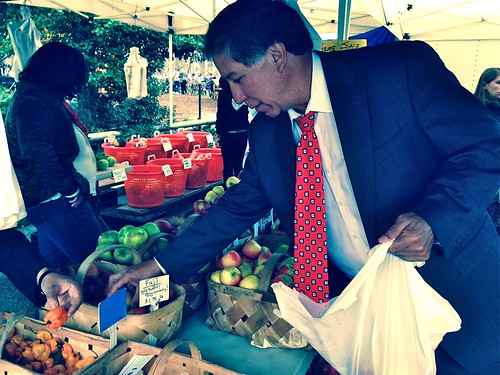
No one would ever accuse me of being a trend-setter—especially my kids. But I’m proud to say that I’ve been part of the local food movement my whole life. I grew up on a family farm in New Mexico. For us, local food wasn’t really a trend or a movement. It was how we made our living. By growing, raising and selling our food throughout the year, we connected to other farmers, ranchers and our neighbors.
More American families are making a conscious decision to eat healthier and buy local foods. Many farmers and producers are combining their hard work with innovative practices like hoop houses and new marketing opportunities like food hubs. These are two examples of modern approaches that are helping extend growing and selling seasons and bringing farmers and suppliers together to meet the increasing demand for local foods.
Since 2010, the number of extended season markets listed in the National Farmers Market Directory has increased 58 percent. The directory—which is voluntarily updated by farmers market managers, state departments of agriculture, marketing associations and others—links 8,100 farmers markets around the country to local consumers. We can now literally travel all the way across the country eating locally.
More than 2,800 of the markets in the directory were launched under this administration and with the support of USDA. Since 2006, we’ve awarded over $32 million in Agricultural Marketing Service (AMS) Farmers Market Promotion Program (FMPP) grants. Many of these awards have helped existing markets build clientele and capacity to remain open year round. For example, in 2011, FMPP provided funds to a local market in Corvallis, Oregon to help them develop a winter farmers market that would include local fishermen.
In Ohio, FMPP awarded a grant to help establish two year-round farmers markets and develop a distribution system for the Lake-to-River Food Cooperative to expand sales to local schools, hospitals and retail sites like gas stations and corner stores. In Calexico, California, the El Centro Food Desert Farmers Market Project received FMPP funds to establish a permanent farmers market where local growers could sell their product year-round while expanding healthy food choices for local residents.
We will continue our record support for these markets – but to do so, we need a Food, Farm and Jobs Bill as soon as possible. A new Farm Bill will enable us to continue supporting projects to expand farmers markets and food hubs, while bringing healthy foods into our neighborhoods and schools. All of these efforts benefit the rural economy and create paths of opportunity for farmers and businesses.
As we get closer to Thanksgiving, I know my family will be adding fresh, local ingredients to our holiday dishes. Many of them will come from our local farmers market. We would love to see what farmers market finds you’ll be using too. Share your photos with us on Twitter by mentioning @USDA_AMS and use the hashtag #LocalisCool.


